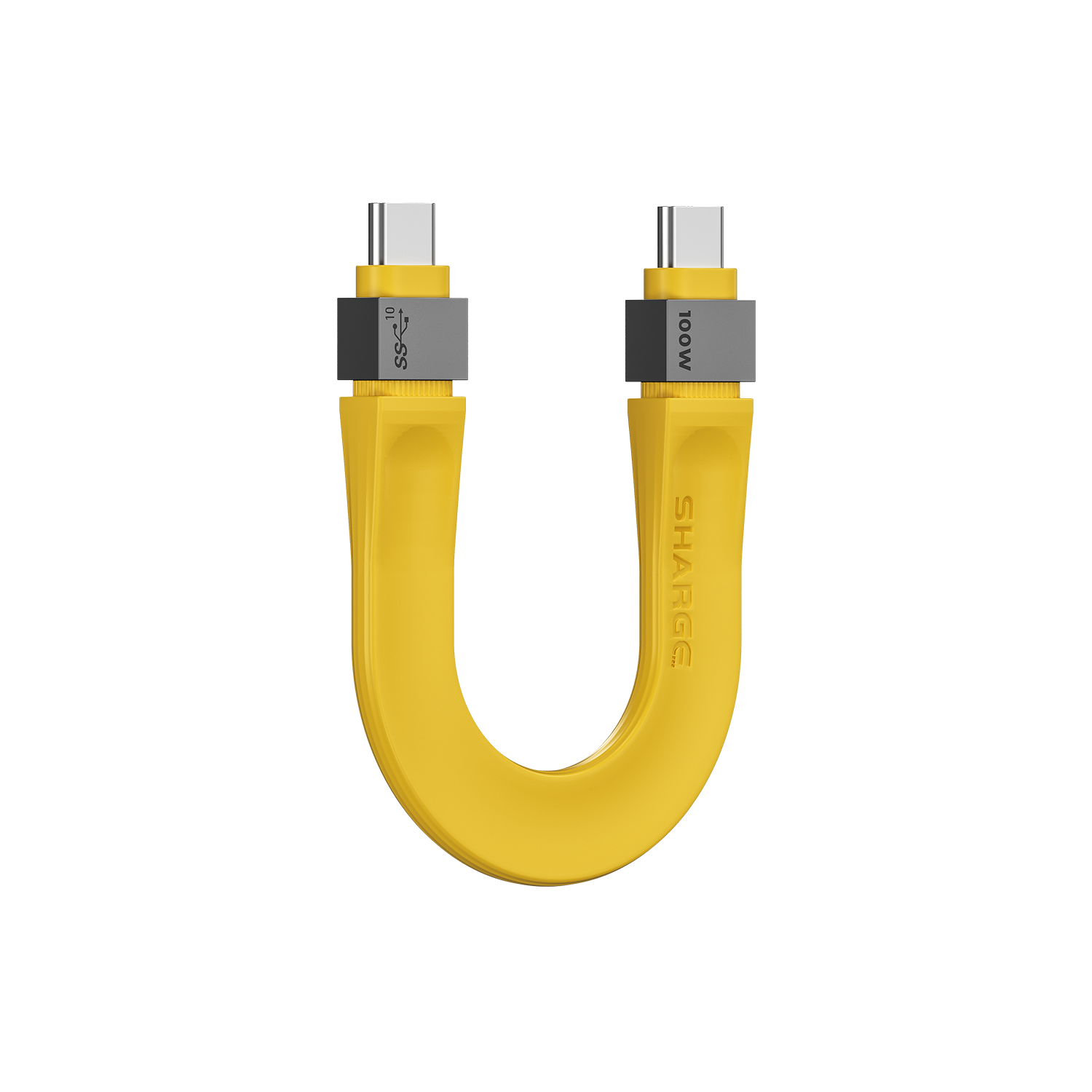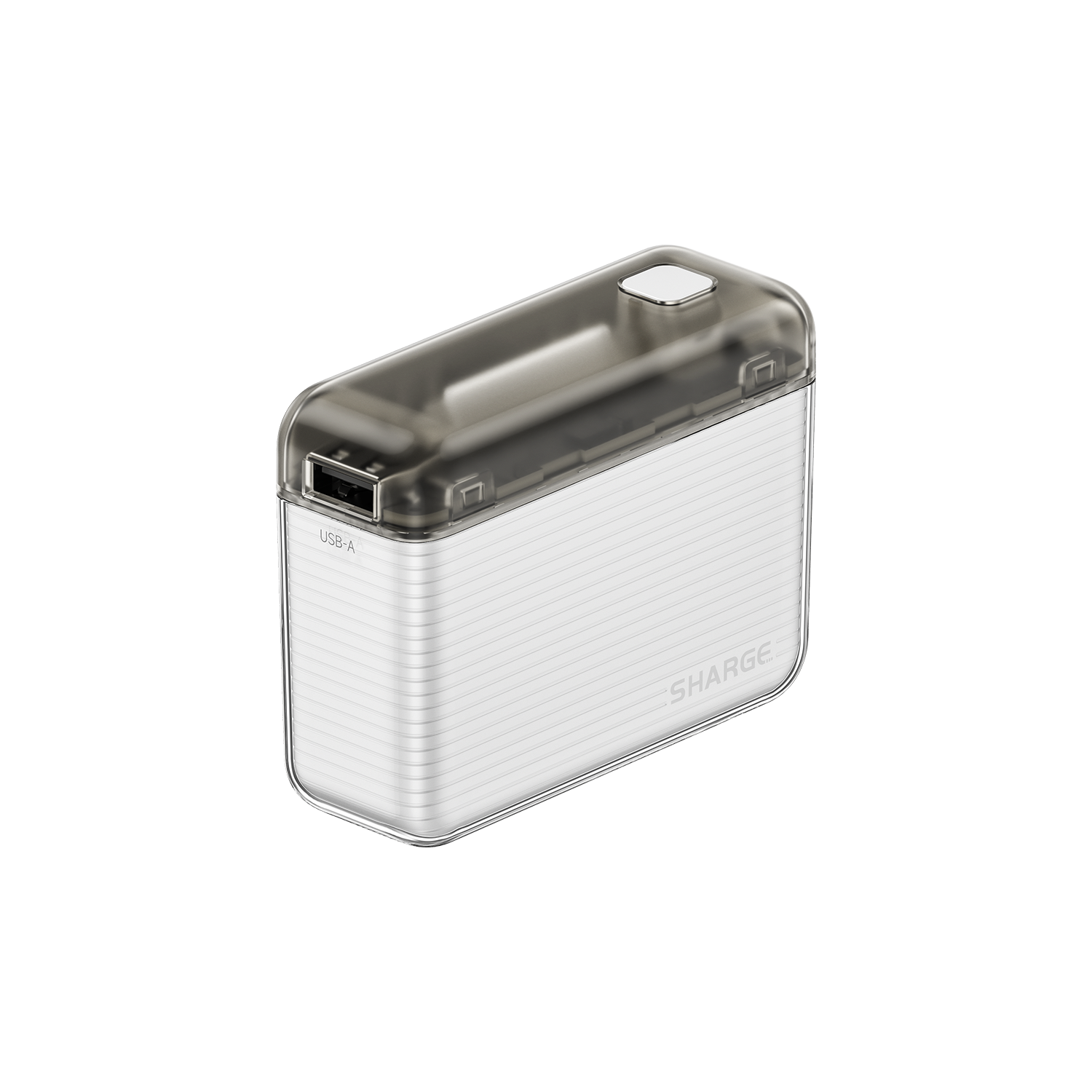Was ist Kohlefaser?
Kohlefaser ist ein leichtes, hochfestes Material, das aus dünnen Strängen von Kohlenstoffatomen besteht. Diese Fäden werden zu einem Stoff verwoben, der nicht nur unglaublich stark, sondern auch bemerkenswert leicht ist. Diese einzigartige Kombination macht Kohlefaser zur idealen Wahl für eine Vielzahl von Anwendungen, von der Luft- und Raumfahrt über die Automobilindustrie bis hin zu Ihren alltäglichen Gebrauchsgegenständen.
Unübertroffene Stärke und Haltbarkeit
Eines der herausragenden Merkmale von Kohlefaser ist ihr außergewöhnliches Verhältnis von Festigkeit zu Gewicht. Es ist fünfmal stärker als Stahl und dennoch deutlich leichter und eignet sich daher perfekt für Produkte, die sowohl Widerstandsfähigkeit als auch Tragbarkeit erfordern. Die Carbonfaser-Serie von SHARGE ist so konzipiert, dass sie den Strapazen des täglichen Gebrauchs standhält und gleichzeitig ein elegantes und elegantes Erscheinungsbild behält.
Schlanke und moderne Ästhetik
Neben seiner beeindruckenden Leistung bietet Kohlefaser auch ein modernes und stilvolles Aussehen. Das charakteristische Webmuster und die tiefschwarze Farbe verleihen unseren Produkten einen modernen Touch, der diejenigen anspricht, die sowohl Form als auch Funktion schätzen. Egal, ob Sie im Büro, im Fitnessstudio oder unterwegs sind, unsere Carbonfaser-Serie wird Ihren Stil aufwerten.
Umweltfreundliche Innovation
Bei SHARGE engagieren wir uns für Nachhaltigkeit. Kohlefaser ist nicht nur langlebig, sondern hat auch eine längere Lebensdauer als viele herkömmliche Materialien, wodurch die Notwendigkeit eines häufigen Austauschs verringert wird. Mit der Wahl unserer Carbonfaser-Serie treffen Sie eine Wahl, die sowohl Ihnen als auch der Umwelt zugute kommt.
Dank seiner bemerkenswerten Eigenschaften und Vielseitigkeit hat sich Kohlefaser zu einem der revolutionärsten Materialien in der modernen Fertigung entwickelt. Mit einer einzigartigen Kombination aus hoher Festigkeit und geringem Gewicht verändert Kohlefaser verschiedene Branchen, insbesondere die Automobil-, Fahrrad- und Drohnentechnologie. In diesem Blog werden wir untersuchen, welche bedeutenden Auswirkungen dieses fortschrittliche Material in diesen Bereichen hat und welche Rolle es bei der Förderung nachhaltigen Designs spielt.

Automobilanwendungen
In der Automobilindustrie spielt Carbonfaser eine Schlüsselrolle bei der Entwicklung von Hochleistungsfahrzeugen. Kultige Marken wie Lamborghini und Ferrari haben die Vorteile der Verwendung von Kohlefaser in ihren Designs schon lange erkannt. Die leichte Beschaffenheit des Materials trägt zu einem geringeren Fahrzeuggewicht bei, was wiederum die Beschleunigung, das Handling und die Kraftstoffeffizienz verbessert. Beispielsweise verfügt der Lamborghini Aventador über ein Monocoque-Chassis aus Kohlefaser, das nicht nur strukturelle Integrität bietet, sondern auch eine bessere Leistung auf der Rennstrecke ermöglicht.
Über Supersportwagen hinaus setzen viele Hersteller Kohlefaser in Mainstream-Fahrzeugen ein, um die Effizienz zu verbessern. Durch die Integration von Kohlefaserkomponenten können Automobilhersteller das Gewicht reduzieren, ohne Kompromisse bei Sicherheit oder Haltbarkeit einzugehen. Dieser Wandel ist im Zeitalter der Elektrofahrzeuge von entscheidender Bedeutung, da jedes eingesparte Kilogramm zu einer größeren Reichweite und einer besseren Gesamtleistung führt.

Innovationen im Radsport
Auch die Fahrradbranche erlebt eine Carbonfaser-Revolution. Führende Marken wie Specialized und Trek Bikes nutzen dieses fortschrittliche Material, um Fahrräder zu entwickeln, die leichter, stärker und aerodynamischer sind. Carbonfaserrahmen ermöglichen es Radfahrern, optimale Leistung zu erzielen, egal ob sie Rennen fahren oder gemütliche Fahrten genießen.
Eine der herausragenden Eigenschaften von Carbonfasern im Radsport ist ihre Fähigkeit, Vibrationen zu dämpfen. Diese Eigenschaft erhöht nicht nur den Komfort bei langen Fahrten, sondern verbessert auch die Kontrolle und Stabilität. Da Radfahrer zunehmend auf der Suche nach Hochleistungsausrüstung sind, ist Carbonfaser sowohl für ernsthafte Enthusiasten als auch für Profisportler zum Material der Wahl geworden.
Darüber hinaus entspricht der Einsatz von Carbonfasern im Radsport dem Trend zur Nachhaltigkeit. Hersteller erforschen innovative Designs und Produktionstechniken, die Abfall und Energieverbrauch reduzieren. Durch die Priorisierung nachhaltiger Praktiken setzt die Fahrradbranche ein Beispiel, dem andere folgen können.

Drohnentechnologie
Im Bereich der Drohnen wird Kohlefaser sowohl für kommerzielle als auch für Freizeitanwendungen zum Standard. Unternehmen wie DJI stehen an der Spitze dieses Trends und nutzen Kohlefaser, um leichte und dennoch langlebige Drohnen zu bauen. Die Stärke des Materials ermöglicht eine erhöhte Nutzlastkapazität ohne Einbußen bei der Agilität und macht es ideal für verschiedene Anwendungen, von Luftaufnahmen bis hin zu Vermessungs- und Such- und Rettungseinsätzen.
Die Vorteile von Kohlefaser gehen über die Leistung hinaus; Sie tragen auch zur Langlebigkeit von Drohnen bei. Durch die Widerstandsfähigkeit gegen Korrosion und Verschleiß können Kohlefaserkomponenten rauen Umgebungen standhalten und bieten im Laufe der Zeit eine höhere Zuverlässigkeit. Da der Drohnenmarkt weiter wächst, wird die Betonung hochwertiger Materialien wie Kohlefaser für die Aufrechterhaltung der Wettbewerbsfähigkeit von entscheidender Bedeutung sein.

Ein Bekenntnis zur Nachhaltigkeit
Obwohl Kohlefaser für ihre Leistungsvorteile bekannt ist, ist es wichtig, ihre Auswirkungen auf die Umwelt zu berücksichtigen. Die Herstellung von Carbonfasern ist traditionell energieintensiv; Fortschritte in den Herstellungstechniken ebnen jedoch den Weg für nachhaltigere Praktiken.
Viele Unternehmen suchen nach Möglichkeiten, Kohlenstofffasern zu recyceln, sie für neue Produkte wiederzuverwenden und den Abfall zu minimieren. Da Nachhaltigkeit zu einem zentralen Thema im Produktdesign wird, arbeiten die Fahrrad-, Automobil- und Drohnenindustrie daran, Carbonfasern so zu integrieren, dass sowohl Leistung als auch Umweltverantwortung im Vordergrund stehen.
Zusammenfassend lässt sich sagen, dass Kohlefaser ein bemerkenswertes Material ist, das die Landschaft der Automobil-, Fahrrad- und Drohnentechnologie neu gestaltet. Sein beispielloses Verhältnis von Festigkeit zu Gewicht öffnet Türen für Innovationen, die die Leistung steigern und gleichzeitig mit nachhaltigen Designpraktiken in Einklang stehen. Während wir das Potenzial von Kohlefaser weiter erforschen, ist es klar, dass dieses Material eine entscheidende Rolle bei der Entwicklung der Zukunft von Hochleistungsanwendungen spielen wird und es zu einem wesentlichen Element im Streben nach Effizienz und Nachhaltigkeit macht.
Kohlenstofffasern revolutionieren die Industrie mit ihrem bemerkenswerten Verhältnis von Festigkeit zu Gewicht und machen sie zur ultimativen Wahl für Hochleistungsanwendungen. Sein geringes Gewicht verbessert die Kraftstoffeffizienz in der Luft- und Raumfahrt sowie im Automobilsektor und bietet gleichzeitig Haltbarkeit in Sportgeräten und Konsumgütern. Darüber hinaus ermöglicht die Vielseitigkeit von Carbonfasern innovative Designs, die die Grenzen des Möglichen erweitern.
Im Hinblick auf die Nachhaltigkeit hat die Kohlefaserproduktion Fortschritte gemacht und neue Methoden reduzieren die Umweltbelastung. Es entstehen auch Recyclinginitiativen, die die Wiederverwendung von Kohlenstofffasern ermöglichen und so den Abfall minimieren. Während wir tiefer in ihr Potenzial eintauchen, verkörpert Kohlefaser nicht nur Spitzentechnologie, sondern steht auch im Einklang mit einer Zukunft, die sich auf nachhaltige Praktiken konzentriert. Die Nutzung dieses Materials könnte für viele Branchen von entscheidender Bedeutung sein und den Weg für eine intelligentere, umweltfreundlichere Zukunft ebnen.




Spannende Neuigkeiten: SHARGE-kompatibel für iPhone 16!
Qi2 Wireless Charging: Die Zukunft der kabellosen Stromversorgung
1 Kommentar
Is it real forged carbon fibre, or is it a finish designed to look like forged carbon fibre?